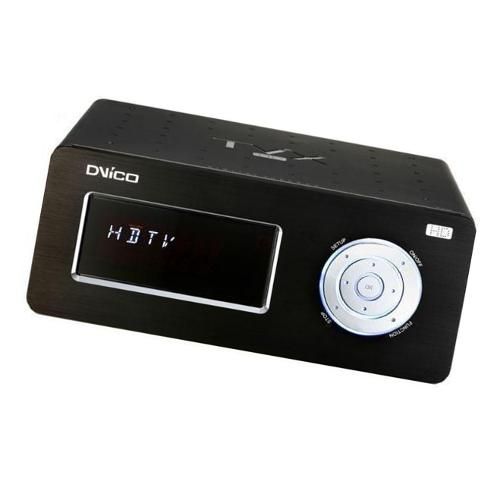DViCO has a bit of a mixed reputation in the media streaming and jukebox market; its products tend to perform very well but often suffer from stability issues and aren’t always the easiest to use.
Our quick take
The 3300 isn’t the easiest device to set-up and it will take quite a while to work your way through all of the features, many of which aren’t presented particularly well. Despite usability issues and the occasional crash, those who have an eye for detail will argue that the excellent performance makes this a sacrifice worth making, and they’d have a point.
If we were to assume this balances itself out though we’d still argue that it’s a little too expensive. £180 is a lot to pay for a streamer with no wireless capabilities or internal drive, particularly if you’re looking to add the sorts of accessories discussed above.

DViCO TViX R-3300 media streamer - 3.5 / 5
| FOR | AGAINST |
|---|---|
|
|
In the TViX R-3300 DViCO presents a mid-range media streamer capable of housing a SATA hard drive or using connected USB media for local storage. There’s an Ethernet port on the back for connecting it to a wired network but sadly no built-in wireless. You’ll have to pick up a separate USB wireless dongle for this, which will set you back around £20. It’s generous enough on the connectivity front though, offering a choice of HDMI, Composite and Component, with the former really necessary in order to get the most from the device in terms of performance.
As well as adding an internal hard drive you’ll also find a slot on the back to install a digital tuner card, which you can pick up from the KJGlobal website for around £70. This allows you to use it as a PVR, with full time-shifting and record facilities, a scheduler and EPG, though you’ll obviously need a hard drive inside to be able to save content.
We managed to get hold of both this and a wireless dongle to give the 3300 a full work out, and were left with rather mixed opinions of the results.
First up the 3300 can be a little fiddly to use. The supplied remote is pretty comprehensive in that it offers dedicated buttons for each of the wide range of features on offer, which do include an impressive degree of media control. Unfortunately it takes a little while to get used to exactly how some of the context-sensitive controls can manipulate the menu you are browsing or the media that is playing. The manual is rather convoluted and doesn’t help much, though patient users happy to resort to the old “trial and error” approach will find their way round soon enough.
Set-up is a mixed affair as, though network support has been improved over previous devices, you’re still limited to sharing a maximum of four folders and if you want to use DViCO’s NetShare application (as opposed to Windows’ folder sharing) you’ll find the set-up and labelling process overly precise and rather frustrating to work through.
It’s worth persevering here though, since streaming quality is extremely good with the 3300, even over a wireless network. It only started stuttering at the maximum 1080i resolution and even this was intermittent, the majority of our HD test files played back just fine. Generally speaking image quality is excellent, controls are extremely responsive and files are fast to load with little or no buffer time either here or when trying to skip back and forth through video.
As mentioned above there’s also a wide range of control options and extra features on offer such as aspect ratio adjustment, zoom, subtitle support and position bookmarking. There’s not quite as much to do with audio and photo content but limited options are available here for slideshow adjustment and repeat/shuffle for music. Format support is very good as well with all the most common supported from the box along with the ability to play ripped DVDs (complete with menu control) directly from an internal drive. Despite testing a wide range of files in different shapes, sizes, formats and codecs we rarely encountered one that wouldn’t play.
In terms of using the device as a PVR we were very impressed by signal quality from the tuner after a rather lengthy scan to pick up channels. The controls are responsive, work well and record quality is extremely good. Unfortunately though the EPG is not, which is a particular burden with the range of Freeview channels on offer, since you’ll be looking to browse over 50 to see what’s on. The layout, for some reason, shows channels in columns and programmes in rows on the display. Traditionally the opposite is used by most other tuners and for good reason. It can take quite a while to browse back and forward through channels and is another niggle to add to the list.
To recap
If you value quality over usability and aren’t put off by the price, the R-3300 is a decent enough effort that should impress
